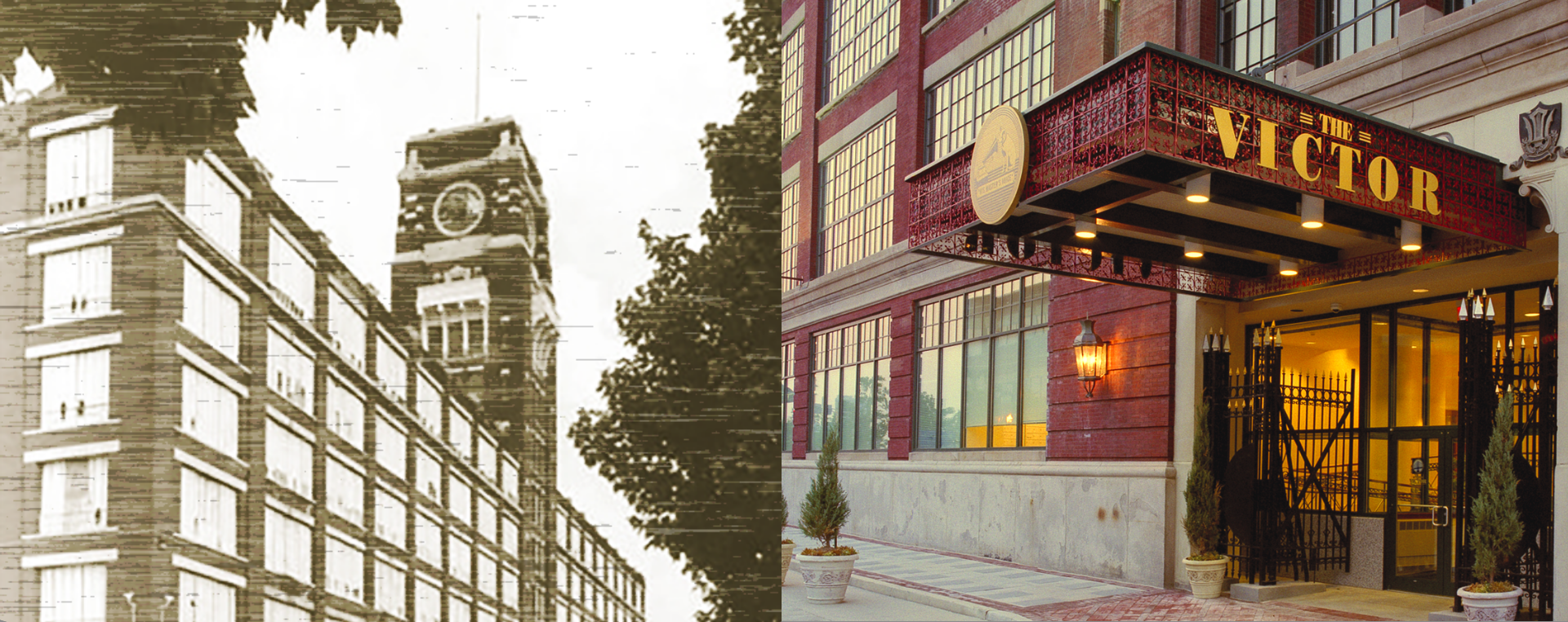An enduring icon
A revolutionary in recorded sound
Imbued with over a century of illustrious history, The Victor was built in the early 1900s as the headquarters for the Victor Talking Machine Company. Merging with the Radio Corporation of America in 1929 to form RCA Victor, the company cemented its reputation as a revolutionary in recorded sound. A beacon of innovation, The Victor was the production site for Victrola gramophone cabinets—including the majestic Berkshire Breakfront on display in The Victor’s Cabinet Room, a pioneering product in home entertainment at the time of its release in 1948. Its stellar streak continued when Neil Armstrong and Buzz Aldrin used backpack radios built at its Camden headquarters to announce their successful landing on the moon.
Dranoff Properties spearheaded the restoration of this treasured landmark—and, by extension, catalyzed the reactivation of the Camden waterfront—converting the former headquarters to 341 authentic industrial lofts with a remarkable renovation. The building had fallen into unfortunate disrepair after General Electric acquired RCA in 1986 and abandoned the site some years later. Dranoff returned the site to its former glory, preserving its proud heritage and giving its dynamic history the permanence and platform it so deserves.
Experience the exquisite legacy of The Victor—from the antique wooden gramophone in the lobby and the stunning Steinway grand piano in the Caruso Room to framed vintage records and memorabilia depicting the scores of artists who recorded here. The elegant Caruso Room honors world-renowned tenor Enrico Caruso, whose rich acoustic recordings were used to exemplify the exceptional sound quality of RCA Victor’s early gramophones in the 1910s and ‘20s.
Crowning the building’s iconic 75-foot brick tower are four round, stained-glass windows first installed in 1915 featuring RCA Victor’s trademark Nipper the dog perched attentively beside a gramophone. A prominent feature in the Camden cityscape, the tower windows earned The Victor the moniker “The Nipper Building,” and its preeminent legacy awarded the building induction to the National Register of Historic Places.


